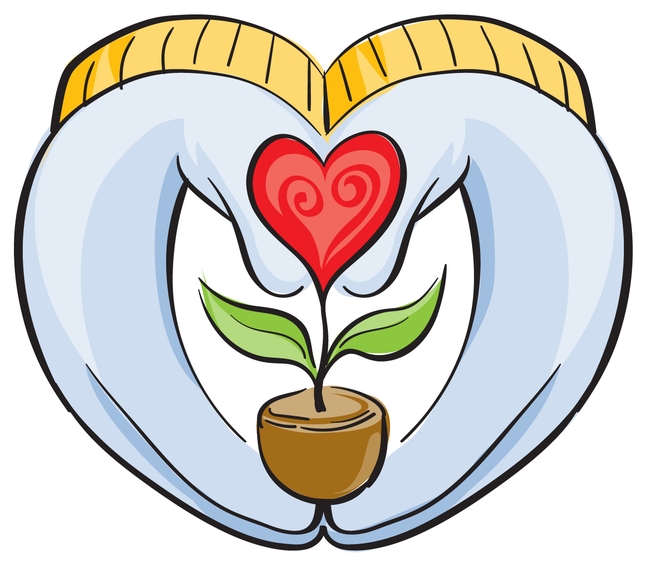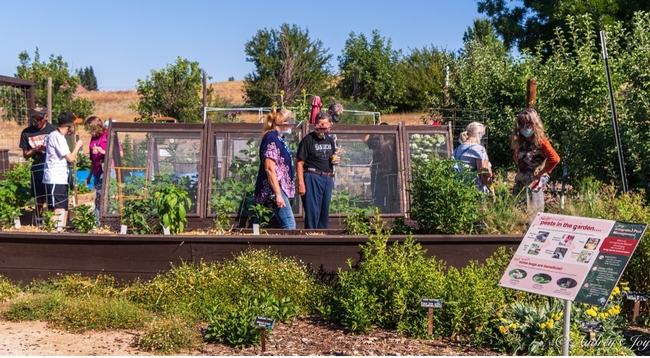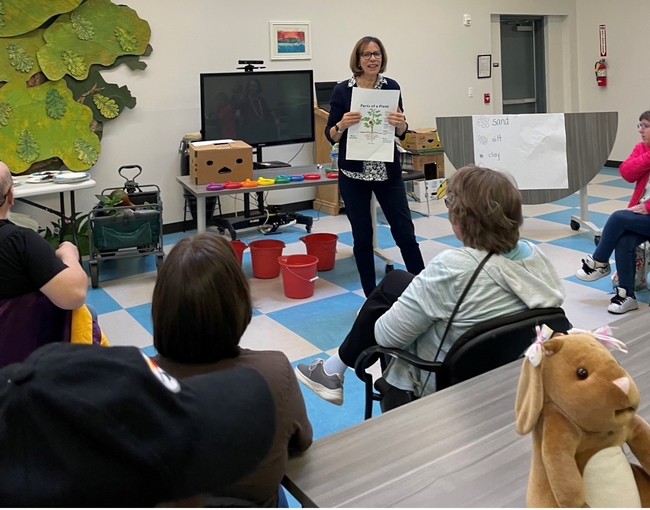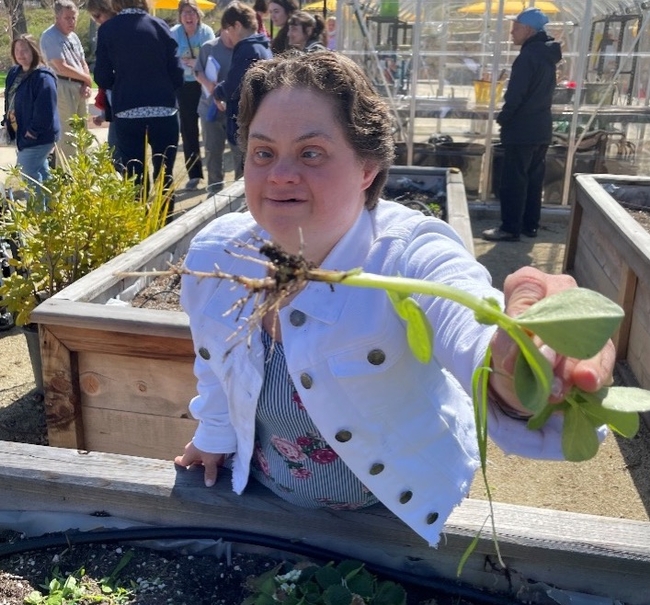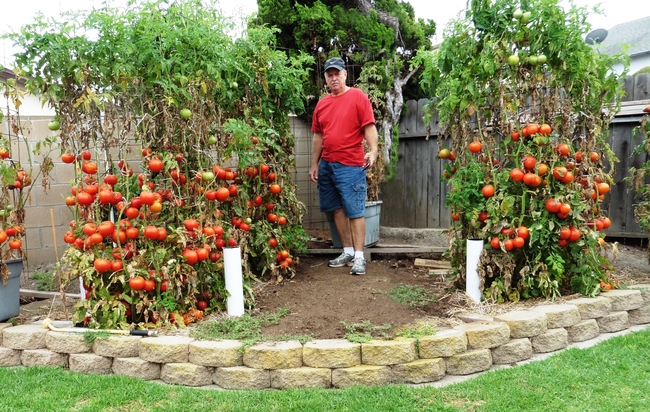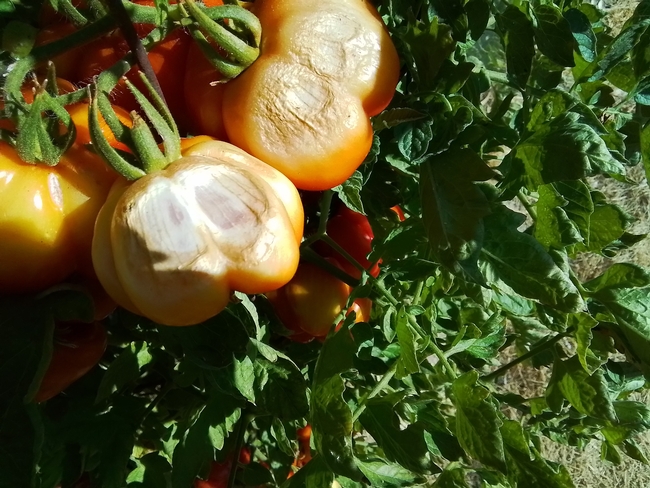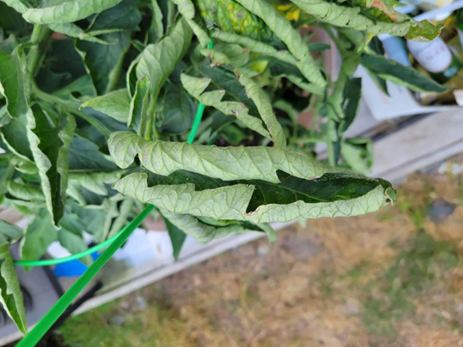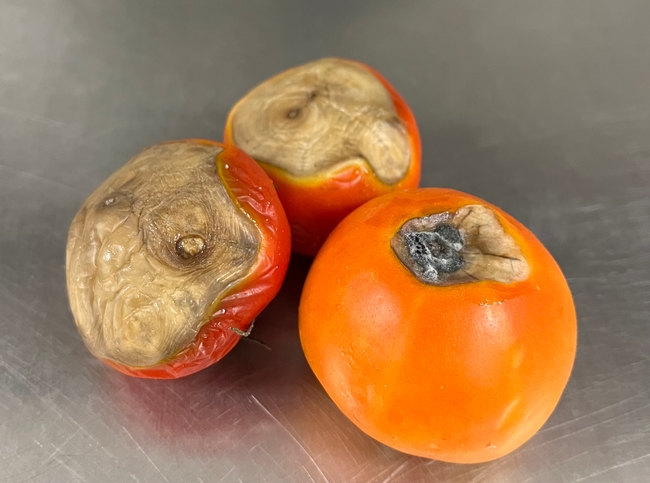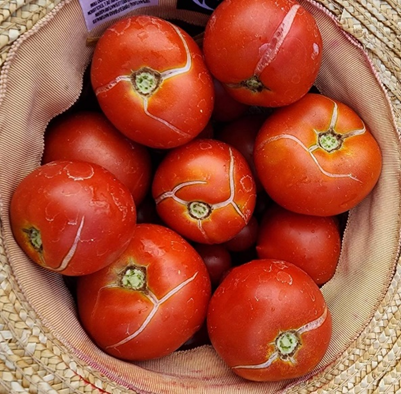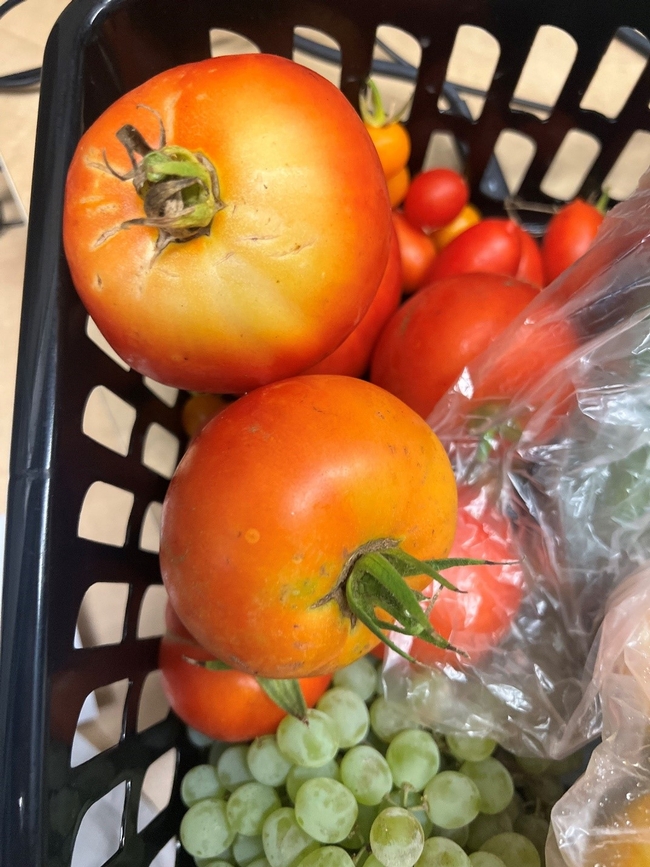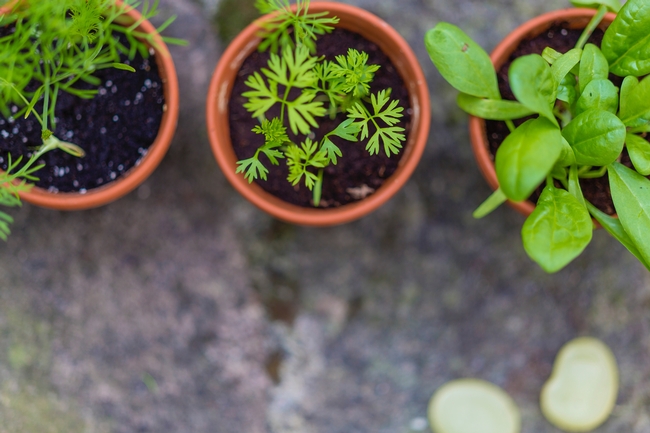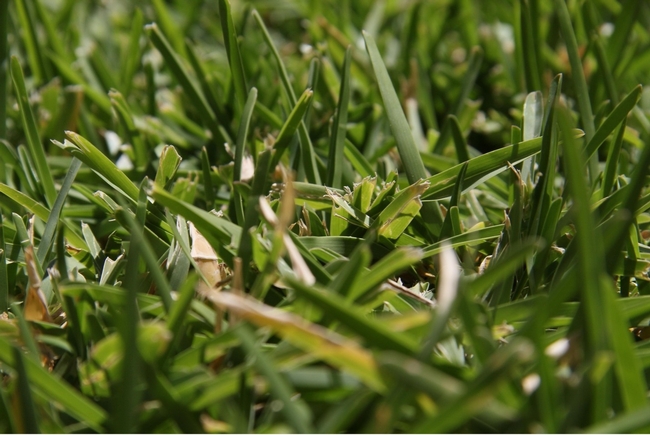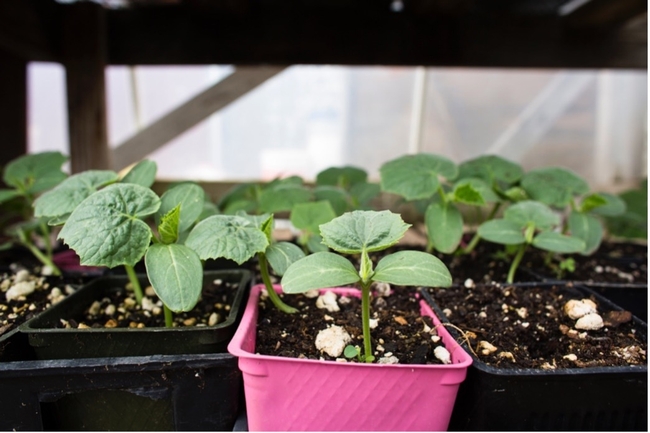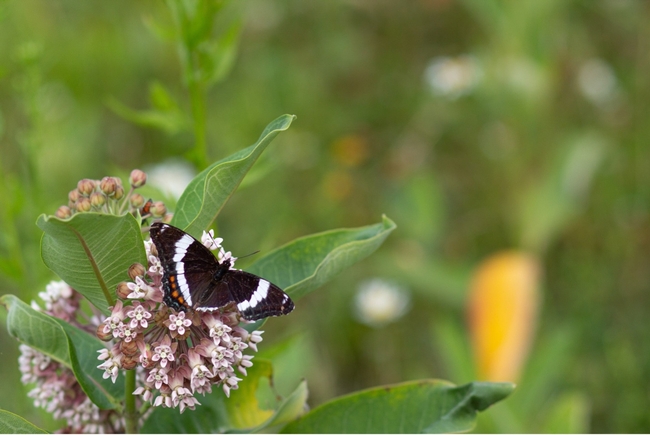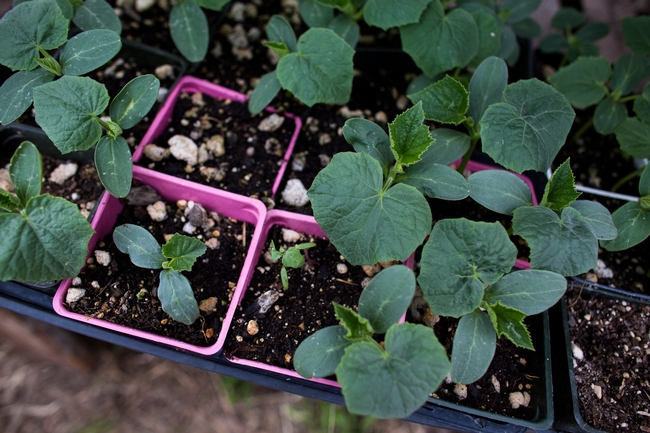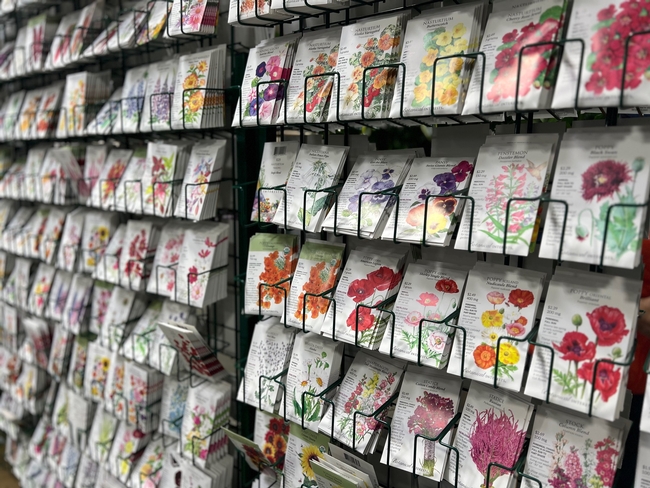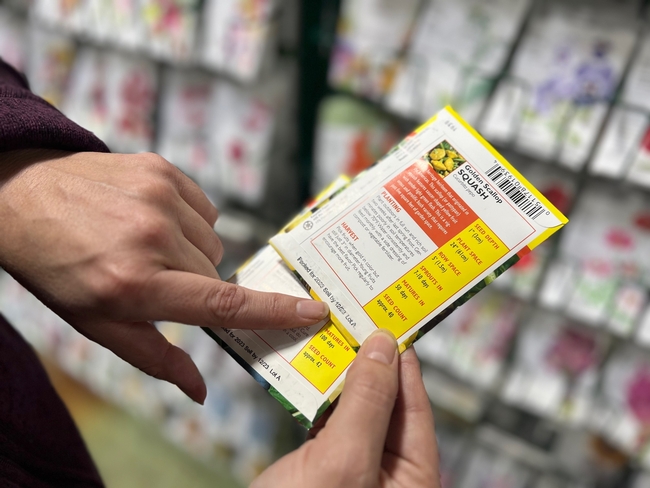Posts Tagged: gardening
Gardeners With Heart: Growing Food and Communities
Watch the video on YouTube here.
In celebration of National Volunteer Month, we are thrilled to spotlight a remarkable group of UC Master Gardener volunteers nominated for their outstanding contributions to food gardening and food access initiatives in their communities. These UC Master Gardeners have gone above and beyond to promote sustainable gardening practices, address food insecurity, and empower their communities to embrace healthier and more resilient food systems. Join us as we recognize and express our gratitude to these inspiring “Gardeners with Heart” for their unwavering commitment to making a positive impact on the lives of others.
Grace Mahannah, a passionate advocate for composting and local food access in Butte County, has been pivotal in promoting sustainable gardening practices and food literacy within her community. Her efforts to connect people with fresh, locally grown produce have helped improve access to nutritious food and strengthen community ties, fostering a more resilient and equitable food system for all. The communities of Gridley and Butte County have benefited from Grace's contributions and efforts, with her successful implementation of projects that expand reach to the far corners of rural communities.
Ferol Conklin, a UC Master Gardener in Mariposa County, works tirelessly as the co-chair of the Plant-a-Row committee to provide excess produce to those in need. Her commitment to addressing food insecurity and promoting sustainable food systems has made a tangible difference in the lives of individuals and families, ensuring that everyone has access to nutritious food. With Plant-a-Row collecting more than 2,000 pounds of fresh produce from multiple home growers and local farms, Ferol's heart for the food insecure of Mariposa County knows no bounds.
Sharon Erickson, a UC Master Gardener in Palo Alto, has been a driving force behind various food gardening initiatives, including the Palo Alto Demonstration Garden and fruit tree pruning workshops. Her dedication to teaching people to grow their own food sustainably has helped build a community centered around the garden, inspiring others to take action and make positive changes in their lives. In the past year, the Palo Alto Demonstration Garden has donated more than 700 pounds of food.
Treva Valentine, an advocate for home vegetable gardening in Yolo County, has shown remarkable resilience and adaptability in continuing her outreach efforts during challenging times. Her commitment to educating and empowering individuals to grow their own food has helped improve food security and promote healthier eating habits within her community. Treva's proactive approach extends beyond Yolo County, has reached approximately 200 people over the past few years with valuable home food gardening advice.
Ann Liu, a dedicated volunteer in Yolo County, transferred to the county a few years ago with a wealth of knowledge and energy. Ann keeps everyone connected and helps feed and educate the community at large. Her involvement in promoting environmental education and community empowerment through her work with SEEDS and the Grace Garden has helped create a more inclusive and resilient community. The Grace Garden's harvest of 657 lbs. of vegetables and 317 lbs. of fruit in 2023, along with 1009 volunteers contributing over 280 hours of service, underscores Ann's impactful efforts.
John Wimer, a passionate advocate for sustainable gardening practices in Amador County, has demonstrated exceptional leadership and dedication to environmental stewardship through his involvement in various food gardening projects and youth field trips. His efforts to empower individuals to embrace sustainable food production methods have helped strengthen community resilience and promote healthier, more sustainable lifestyles for all. John's contributions extend to every school in Amador County through school garden mentors and local farm visits, highlighting his commitment to education and community engagement.
Patti Joki and Gail Myers, both UC Master Gardeners in Alameda County, have played instrumental roles in organizing the Incredible Edible Plant Sale. This event not only raises funds but also provides valuable resources and education to the community. Through their leadership and dedication, they have fostered a culture of environmental stewardship and community resilience, inspiring individuals to grow their own food sustainably and contribute to a healthier food system.
We are incredibly grateful for the dedication, passion, and hard work that Grace Mahannah, Ferol Conklin, Sharon Erickson, Treva Valentine, Ann Liu, John Wimer, Patti Joki, and Gail Myers, have demonstrated in promoting food gardening and food access initiatives in their communities. Their collective efforts have made a significant impact on the lives of individuals and families, serving as inspiring examples of how volunteers can make a positive difference in the world. As we celebrate National Volunteer Month, let us express our heartfelt gratitude to these “Gardeners with Heart” for their invaluable service and commitment to creating a healthier, more equitable food system for all.
About National Volunteer Month and Gardeners with Heart
During National Volunteer Month (April 1 - 30), the UC Master Gardener Program celebrates its incredible volunteers and their contributions to California communities. Gardeners with Heart volunteers were nominated for their outstanding work in food gardening and food access initiatives, highlighting their commitment to promoting sustainable food systems and community resilience. Join us in honoring their dedication and passion for making a difference in the lives of others. If you would like to get involved and learn more about gardening in your community you can find your local program here.
Award-Winning Excellence, Community, and Empowerment in El Dorado County
In the rolling foothills of El Dorado County, Calif., a beautiful community garden thrives. Not just an ordinary garden plot, but a community space that cultivates life skills, self-confidence, and weaves a vibrant tapestry of community. The architects of this garden are the UC Master Gardeners of El Dorado County and their partners CalFresh Healthy Living, UCCE (CFHL, UCCE) and the Mother Lode Rehabilitation Enterprises (MORE), a non-profit supporting adults with disabilities. Together, they've crafted a pathway to equal opportunities, inclusivity, and engaging experiences for the clients at MORE.
Recently, the team's extraordinary efforts were recognized statewide in the UC Master Gardener Program's Search for Excellence awards for their commitment to expanding the program's reach to a typically underserved audience. “I was moved after reading the El Dorado MORE volunteer project that focuses on teaching adults with disabilities about gardening and growing food. UC Master Gardeners' dedication to creating an inclusive and empowering environment where individuals of all abilities can learn and flourish is inspiring,” commented a Search for Excellence committee member.
Transitioning from childhood to adulthood can be challenging for many people with disabilities. The path to continued learning and independence often becomes foggy and winding. It's a journey that calls for customized support, guidance, and resources. At the heart of MORE's fully inclusive program is a commitment to improving the quality of lives and making dreams come true for the people they serve.
In late 2018, a seed of collaboration was planted as MORE, the UC Master Gardener Program and CFHL, UCCE initiated a partnership built on shared goals—cultivating an enriched life for adults with disabilities. The blossoming garden-based lessons led by UC Master Gardener volunteers perfectly intertwined with CFHL, UCCE's nutritional education and MORE's education and MORE's mission.
In 2020 and 2021, despite the many challenges of COVID-19 UC Master Gardeners continued to provide harvested fruits and vegetables and deliver projects to MORE, even when in-person meetings were on hold. Following the pandemic shutdown, the partnership thrived anew in 2022, breathing new life into their mission with revised plans, fresh goals, and an updated curriculum. The renewed goals of the collaboration were as multi-layered as a well-tended compost heap: providing practical garden and nutritional instruction, introducing sustainable practices, promoting healthy food choices, and fostering skills leading to increased independence.
UC ANR's “Teams with Intergenerational Support” or TWIGS program for gardening and healthy eating curriculum, complemented by CFHL, UCCE's "Harvest of the Month" curriculum, was a perfect fit. This hands-on, research-based approach provided the ideal way for MORE clients to delve into the fascinating realms of botany and nutrition. Traditional methods of assessment often miss the mark when catering to adults with various abilities. Hence, the team innovated, embedding assessments within instruction, using interactive and engaging tools like stickers, thumbs-up/down gestures, and verbal responses. This fluid, dynamic approach ensures each participant can connect with the concepts and apply them to their daily lives.
One rewarding highlight includes clients adopting fruit trees at the Sherwood Demonstration Garden orchard, learning about seasonal changes, and assisting with pest management. This sense of ownership and responsibility is a profound result of the program's influence. Clients are actively involved in the food cycle—harvesting crops, preparing healthy meals, and understanding the nutritional value of what they eat.
In a world often focused on individual achievement, the story of the UC Master Gardeners of El Dorado County, CalFresh Healthy Living, UCCE, and Mother Lode Rehabilitation Enterprises serves as a reminder of the transformative power of community and collaboration. As their clients and garden continue to flourish, we are reminded that the journey to excellence is best undertaken together. This is a celebration of their award-winning work, a testament to the importance of community, and a heartwarming reminder of how we can all grow together!
Bring on the Tomatoes! 5 Common Tomato Problems and Solutions
Almost any home gardener will tell you that one of the most versatile and rewarding plants to grow in a summer edible garden is a tomato. In fact, a 2023 study by the National Gardening Association revealed that 86 percent of gardeners grow tomatoes. It is understandable that the tomato plant is a popular home vegetable garden staple, tomatoes offer thousands of different varieties options and flavors. Plus, nothing beats the bursting flavor of a ripe tomato straight from the garden.
When properly cared for, a single tomato plant can produce 10 to 15 pounds (4.5 to 6.8 kg) or more of fruit. As with any gardening journey, sometimes there can be obstacles or challenges to overcome. If tomato yields aren't what was expected, or the fruit is damaged, it could be due to a number of abiotic disorders, diseases or pesky pests.
Abiotic disorders result from non-living causes and are often environmental, for example: unfavorable soil conditions, too much or too little water, extreme temperature, physical or chemical injuries, and other issues that can harm or kill a plant. Using research-based information from UC Agriculture and Natural Resources (UC ANR) publication, Growing Tomatoes in the Home Garden.
Here are five of the most common abiotic disorders of tomatoes and how to address them:
- Sunburn or Sunscald: Yes, just like humans tomatoes can also suffer from sunburns because of overexposure to the sun. Sunburnorsunscald occurs on the side of the fruit exposed to the sun, which turns brown and becomes leathery in texture. Solutions:
- Maintain the plant canopy to produce adequate leaf cover for the fruit.
- Avoid overpruning.
- Provide partial shade during peaks sunlight hours.
- Leaf Roll: You might find that the older leaves on your plant suddenly roll upward and inward, becoming stiff, brittle and tough to the touch. This is typically caused by high light intensity and moist soil, especially in staked and heavily pruned plants. Solutions:
- Choose less-susceptible varieties.
- Maintain even soil moisture.
- Provide partial shade during peaks sunlight hours.
- Blossom End Rot: This condition appears as a water-soaked spot at the blossom end of the fruit, which enlarges and darkens, creating a sunken, leathery appearance. It's more prevalent in sandy soils and is primarily caused by calcium nutrition imbalance and inconsistent water levels. Solutions:
- Maintain even soil moisture.
- Amend planting area with compost to improve water retention.
- Avoid heavy applications of high-nitrogen fertilizer.
- Soils deficient in calcium may be amended with gypsum.
- Fruit Cracks and Catfacing: Rapid growth during high temperatures and excessive soil moisture can lead to circular concentric cracks around the stem end, radial cracks shooting out from the stem, and malformation and cracking at the blossom end, a phenomenon known as ‘catfacing'. Solution:
- Keep soil evenly moist.
- Maintain good leaf cover or provide partial shade during hours of most intense sunlight.
- Mulch around the plant 3 to 7 inches deep to maintain soil moisture and temperature.
- Solar Yellowing and Green Shoulders: This problem is marked by the tomato turning yellow or yellow-orange instead of the normal red color, with the upper part of the fruit stubbornly staying green even though the lower part appears red and ripe. It's a result of high temperatures and intense light. Solutions:
- Maintian plant vigor to produce adequate leaf cover.
- Avoid overpruning.
- Provide partial shade during hours of most intense sunlight.
A variety of insects and pests can cause other damage to tomato plants. Some examples of common pests, include: hornworms, tomato fruitworms, tomato pinworms, stink bugs, white flies, and leafminers. For information about identifying and managing pests in your edible garden visit the UC Integrated Pest Management (UC IPM) website, ipm.ucanr.edu.
Navigating the ups and downs of growing tomatoes might seem daunting, but don't forget, every seasoned gardener has been in your shoes once. We've explored the common abiotic diseases and challenges you might encounter in your tomato-growing journey, and hopefully armed you with solutions to keep these issues at bay.
If you have additional questions or need more help, don't hesitate to reach out to your local UC Master Gardener Program. We have a team of volunteers trained and eager to help you have a bountiful harvest! mg.ucanr.edu/FindUs
Source: Growing Tomatoes in the Home Garden Publication 8159 http://anrcatalog.ucanr.edu/pdf/8159.pdf
Is Your Garden Ready for Spring? - March Gardening Tips
Happy March! The days are starting to get longer, which means the spring gardening season is about to begin. As temperatures begin to warm, it's the perfect time to start tackling tasks in the garden. Whether you've been hibernating and taking a break from gardening this winter, or you've been planning your spring garden for months, we have some gardening tips to help your garden thrive.
1. Clean up your garden just before the growing season swings into full gear. March is the perfect time to clean up your garden. If you haven't already be sure to:
- Prune dead branches to keep your trees healthy (for more information check out this pruning resource.)
- Prune summer-flowering plants that bloom on new wood such as crape myrtle
- Pull weeds once garden beds aren't water-logged
- Remove dead leaves or plant debris
- Clean your garden tools
2. Fertilize your lawn. The most important nutrients for lawns are nitrogen, phosphorus, and potassium. But most lawns only regularly need nitrogen. To give your lawn the nitrogen it likely needs, you must decide between a:
- Slow-release fertilizer that lasts 8-10 weeks (typically marked on the package as water-insoluble nitrogen or WIN)
- Soluble fertilizer that lasts about 4 weeks
3. Check your irrigation system to see if it needs maintenance. Adjust your irrigation controller for the appropriate season. Plants don't need as much water in late fall, winter, and early spring as they do in the summer months. Adjusting your watering schedule can save water and rescue plants from being overwatered. Do a walkthrough to check your irrigation system for any leaks or problems.
Common irrigation problems and solutions | |
|---|---|
|
PROBLEM |
SOLUTION |
|
broken sprinkler |
replace with a sprinkler that applies water at the same rate |
|
unmatched sprinklers |
replace with sprinklers that apply water at a common rate |
|
sunken sprinkler risers |
raise the sprinklers or replace |
|
crooked sprinklers |
straighten to an upright position |
|
turfgrass growing around sprinklers, other plants blocking sprinklers |
mow, prune or remove plant material |
|
sand or debris plugging sprinklers |
flush out sprinklers to remove debris; replace sprinklers as necessary |
4. Look for standing water in your landscape and containers. It is crucial to ensure that there is no standing water in your yard or garden, as it can be a breeding ground for mosquitoes.
5. Plant cool-season vegetables. March is still a good time to plant cool-season crops like peas, lettuce, spinach, and broccoli. These crops love the cooler weather and will thrive in your garden this time of year. Make sure to plant them in a spot that gets plenty of sun and has well-draining soil.
6. Start warm-season seeds indoors. If you're planning on growing warm-season vegetables like tomatoes, peppers, or eggplants, now is the time to start your seeds indoors. Learn more about seed-starting from our recent blog: Get a Head Start on Your Garden by Starting Your Vegetable Seeds Indoors.
7. Grow herbs. March is an excellent time to grow herbs that can enhance the flavors in your breakfast, lunch, or dinner. Herbs can be grown indoors (e.g., in a kitchen window) or outdoors in a pot, raised bed, or in the ground. Herb leaves and herbaceous stems are an incredible addition to most food. Try a new chimichurri recipe or herbed veggie dish this spring.
8. Look out for ladybug hatchlings. While inspecting your garden for pests, keep an eye out for newly hatched ladybugs and refrain from disturbing them. Ladybugs can be extremely beneficial to your garden as they prey on aphids that can be harmful to your plants. For additional information on ladybugs, you can refer to UC IPM's Lady Beetle information.
9. Plant flowers to attract butterflies and support your local pollinators. Some great pollinator-supporting plants include:
- Milkweed
- Lantana
- Honeysuckle
March is an exciting time in the garden as it marks the beginning of the growing season. As the temperatures start to rise there's a lot to do in the garden from maintenance to planting. It's time to start putting in the work that will pay off when you see your beautiful spring garden.
Ask your local UC Master Gardener Program
Have a gardening question? UC Master Gardener volunteers are available to help. Click here to Find a Program and connect with your local UC Master Gardener Program. You will be redirected to your local county website and contact information. UC Master Gardener volunteers are available to help answer questions for FREE. Happy gardening!
Get a Head Start on Your Garden by Starting Your Vegetable Seeds Indoors
February is a great time to start preparing for your spring and summer vegetable garden, especially if you want to get a head start on the growing season. According to the California Master Gardener Handbook, growing your own transplants from seed indoors can extend your garden season by several weeks, reduce your gardening cost and allow you to grow a more diverse variety of crops.
Growing from seed is not only fun, but it can also save you money. When stored properly a typical seed packet can last several years. Seeds should be started indoors or in an outdoor hot box or cold frame. Start growing the seeds 6-8 weeks before the date you would like to transplant them and when the threat of frost has passed.
Another benefit of growing vegetables from seed is the wide selection of varieties available from seed catalogs. Growing different varieties is important for an extended harvest and to find plants that grow well in your area. Vegetable plants sold in seedling form are generally available in only one or a few varieties. Plants typically started by seeds indoors include broccoli, cauliflower, eggplant, parsley, tomatoes and peppers. Seeds typically started in the ground include beans, beets, carrots, peas and turnips.
What do you need to get started?
- Soil mix - The soil media you choose should be fine textured, uniform and airy. Do not use garden soil. It is usually too heavy and often may have disease-causing organisms. A commercial potting mix suited to starting seeds will work well. Fill your growing containers about 2/3 full.
- Containers - You can start seeds in almost any container that has drainage holes. Sterilize recycled containers in a 1:9 bleach to water solution, rinse them well and let them air dry prior to use.
- A location with proper light and temperature - A sunny window is usually the perfect spot as it has strong but indirect sunlight. Seed packages should instruct you on sunlight needs. Additionally, keep your seedlings in an area that stays between 65 and 70 degrees during the day and 55-60 degrees at night.
- Quality Seeds – Only plant seeds from a reputable source. Check your seed packets to ensure your seeds have not expired, and that you are planting them at the right time of year. You can also check for seed viability.
- Water – It is crucial to provide seeds with consistent watering. Seeds and seedlings must be kept evenly moist to thrive.
Steps to starting your vegetable garden indoors
- It is important to follow the instructions on your seed packet. Refer to the seed packet for the proper planting depth, plant spacing, and days to maturity.
- Once you have planted your seeds, water them and continue to do so consistently. The goal is to keep the soil evenly moist but not overly wet.
- Two weeks before transplanting, or when your plants are two to four inches tall, expose them to outdoor temperatures to acclimate them. Do this by leaving them outside in a shady spot during the day for a week, and bringing them inside at night. The following week, leave them outside in their containers during the day and at night, gradually exposing them to more sunlight. This process is referred to as hardening off.
- Transplant your vegetables into the garden, planting them at their original depth. Tomatoes can be an exception to this rule however, so consider this tutorial before planting tomato seedlings. Be sure to handle seedlings with care.
Ask your local UC Master Gardener Program
Have a seed starting or home vegetable gardening question? UC Master Gardener volunteers are available to help. Click here to Find a Program and connect with your local UC Master Gardener Program. You will be redirected to your local county website and contact information. UC Master Gardener volunteers are available to help answer questions for FREE. Happy gardening!





